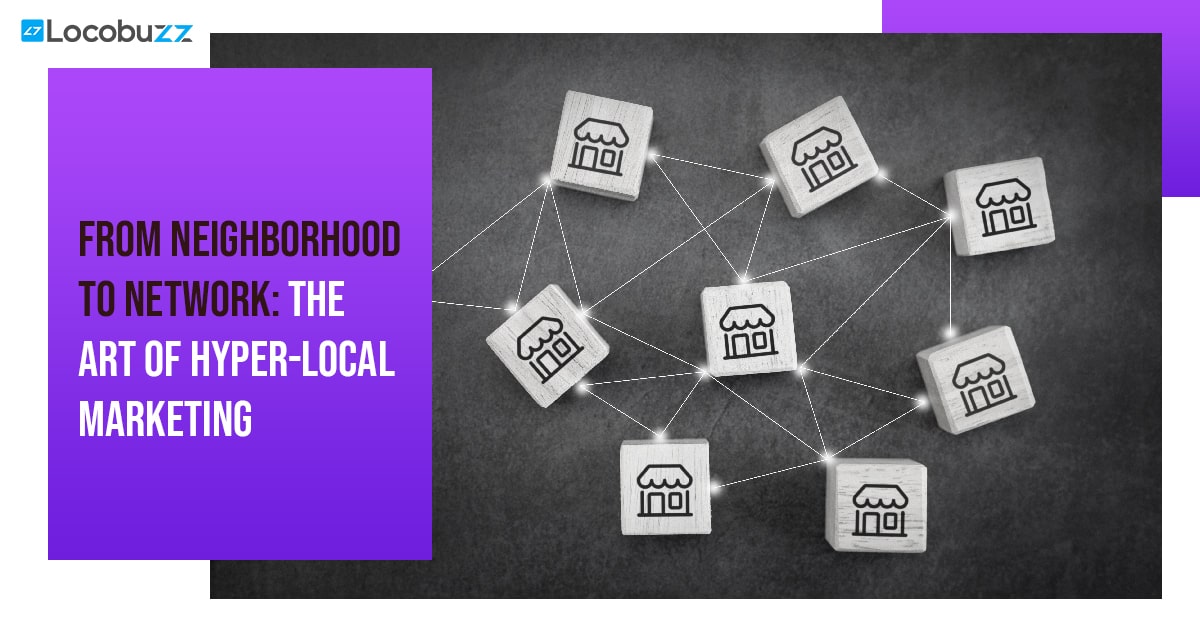Top 15 Benefits Of Competitor Analysis in 2024

Ever found yourself wondering why some businesses seem to always be two steps ahead? It’s like they have a crystal ball, forecasting trends, dodging pitfalls, and seizing opportunities long before anyone else even spots them. Well, It’s not magic; it’s competitor analysis.
This blog is your roadmap to know the top 15 benefits of competitor analysis in 2024. We’ll see how it helps businesses to navigate it, identify opportunities for innovation, and craft strategies that ensure they stay not just relevant, but ahead of the curve.
Top 15 Benefits of Competitor Analysis
Table of Contents
1. Enhanced Market Understanding
By analyzing your competitors, you can understand the unmet needs within the market. This insight enables you to tailor your products or services to fill those gaps, potentially capturing a larger share of the market. By observing how competitors market their products or services, you can identify what works and what doesn’t. This knowledge can be valuable in refining your marketing efforts, making them more targeted and effective.
2. Strategic Planning and Forecasting
This benefit ensures that your moves are not just reactive but proactive, which will align your business with the future market developments.
This analysis provides clarity on where your competitors are investing their resources in, the strategies they’re developing for growth, and the areas where they might be lagging.
Armed with this knowledge, you can make informed decisions about where to allocate your own resources, which markets to enter or exit, and which products or services to develop, enhance, or phase out.
3. Identify Market Gaps of Market Gaps
Through competitor analysis, you might notice that while many businesses in your sector offer similar products, there’s a lack of personalised customer service or after-sales support. This gap represents a golden opportunity for your business to differentiate itself by focusing on an exceptional customer experience, not just during the sale but throughout the product lifecycle.
Once a market gap has been identified, the next step is strategizing on how best to fill it. This phase is where creativity and innovation come into play, as your business improvises on new products, services, or develops that specifically address these unmet needs.
4. Gain Competitive Edge in Pricing
In the game of business, pricing is an important move that can either secure your position or leave you vulnerable to attack. Competitor analysis arms you with the insight needed to optimise your pricing strategies, ensuring you’re not just competitive but also profitable.
By analysing these pricing structures, you can identify patterns, strategies, and the perceived value they offer to customers. This knowledge enables you to adjust your pricing to either match the market, undercut competitors, or justify a premium.
For instance, if competitor analysis reveals that your main rivals are competing aggressively on price, you have a strategic decision to make. Do you join the price war, potentially eroding margins for everyone involved, or do you differentiate on value, convincing customers that paying a bit more with you is worth the extra cost? Alternatively, you might discover a niche segment willing to pay a premium for a bespoke solution, allowing you to avoid the price war altogether and focus on higher margins.
5. Improvise Product Development
Competitor analysis offers a vantage point from which to view the marketplace. By dissecting the features, benefits, and shortcomings of competitors’ products, businesses can identify areas ripe for innovation. With this knowledge, you can push the boundaries of traditional thinking, exploring new features, technologies, or applications that address unmet needs or improve upon existing solutions.
For example, if your analysis reveals that customers appreciate a particular feature in a competitor’s product but wish it offered more functionality, this insight presents a clear opportunity for innovation. By developing a similar yet innovative feature, your product not only meets the existing demand but exceeds expectations, setting a new standard in the market.
Competitive insights can guide decisions on product lifecycle management, from introduction to retirement. By monitoring how competitors manage their product portfolios, businesses can make informed decisions about when to launch new products, phase out older ones, or invest in marketing to extend the lifecycle of existing offerings.
6. Optimise Market Strategy
Competitor analysis provides a critical foundation for tailoring your marketing efforts. By understanding the strategies employed by your competitors, you can identify what resonates with your shared audience—and where there are gaps.
For example, if your analysis reveals that competitors are focusing heavily on price-based promotions, but there’s little emphasis on product quality or customer service, these areas present an opportunity for differentiation. By highlighting your superior product quality or exemplary customer service in your marketing campaigns, you can appeal to segments of the market that value these aspects over price alone.
Knowing where your competitors are investing their marketing efforts can also guide your channel selection.
If competitors are heavily focused on paid search and social media, exploring content marketing, SEO, or even traditional media might provide a fresh avenue to connect with your audience, potentially at a lower cost and with less noise.
7. Understand Better Customer Insights
Analysing customer feedback on competitors’ products or services provides a clear window into their strengths and weaknesses from the consumer’s perspective. This insight is invaluable for identifying gaps in your own offerings and areas for improvement. For example, if customers consistently praise a competitor for their responsive customer service but criticise another aspect, such as their product durability, you have a roadmap for differentiation—emphasise your product’s reliability and your commitment to customer satisfaction.
This feedback can guide your product development, marketing messages, and even customer service protocols. Understanding the specific attributes that drive customer satisfaction or dissatisfaction allows you to tailor your approach to meet these expectations and meet the customers expectations.
8. Identifying Areas of Risk
Whether it’s a new product launch, a strategic partnership, or a shift in marketing tactics, these moves can signal changes in the competitive landscape that may pose threats to your market position.
By monitoring these developments, you can proactively adjust your strategy to counteract these threats, ensuring your business remains resilient in the face of change.
For example, if a competitor is making significant inroads into a market segment you’ve dominated, understanding their strategy allows you to fortify your position, whether through targeted marketing, enhanced product features, or improved customer service.
By understanding competitor customer feedback, businesses can enhance their service and product offerings, ensuring they not only meet but exceed customer expectations.
9. Have better Operational Efficiency
Achieving learner, more effective operations can significantly boost a company’s competitive edge, affecting everything from cost structure to customer satisfaction. One of the most insightful strategies to enhance operational efficiency is benchmarking against competitors. This process provides a clear picture of where you stand in the market and highlights areas for improvement by drawing lessons from the successes and failures of others.
This analysis can cover a broad spectrum of areas, including production costs, supply chain efficiency, employee productivity, and technology utilisation. By understanding how your operations stack up against those of your competitors, you can identify gaps in efficiency and areas where your processes could be streamlined or enhanced.
10. Gain insights into competitor workforce strategies
Analysing your competitors’ approach to talent attraction and retention involves more than just looking at the benefits they offer. It extends to understanding their company culture, growth opportunities, work-life balance initiatives, and how they communicate these aspects to the job market.
Social media, company review sites like Glassdoor, and industry forums can provide a wealth of information on how competitors are perceived by their employees and the broader job-seeking community.
For example, if you notice that a competitor is consistently praised for its innovative training programs and rapid career advancement opportunities, this highlights an area that potential employees value highly.
A strong employer brand is essential in attracting and retaining top talent. Insights into competitors’ workforce strategies can inform your employer branding efforts, helping you to differentiate your company in the job market. Highlighting your unique culture, values, and the opportunities you offer can make your organisation more attractive to potential employees.
11. Identify and capitalise on Investment and Growth
Competitor analysis can uncover patterns in investment that signal industry trends or shifts in consumer demand. For example, if multiple competitors are increasing their investments in sustainable technologies or practices, this could indicate a growing market demand for eco-friendly products or services.
Recognizing these trends early on allows your company to invest in these areas before they become saturated, providing a first-mover advantage that can be difficult for later entrants to overcome.
Analysing the geographical expansion of competitors can reveal new markets with unmet needs. By understanding the demographics, consumer behaviours, and economic conditions of these regions, your business can tailor its offerings to meet local demands.
12. Improvise on Legal and Ethical Benchmarking
Regularly monitoring the legal and regulatory landscape within your industry is essential for maintaining compliance. By benchmarking your practices against those of your competitors, you can identify areas where your business may be at risk of falling short of legal obligations or industry standards. This proactive approach to compliance not only safeguards your company against legal penalties but also reinforces your commitment to ethical business practices.
For example, if competitors are adopting more stringent data protection measures in response to new regulations, it’s a clear signal for your business to review and possibly strengthen its own data privacy policies to ensure compliance and maintain customer trust.
For instance, if competitors are making significant strides in reducing their environmental impact, this could motivate your company to invest in sustainable practices or technologies that not only benefit the environment but also position your brand as a leader in corporate responsibility.
13. Surpass competitor technological adoption
Keeping pace with, or ideally surpassing, competitor technological adoption can transform your business, enhancing efficiency, product offerings, and customer experience. Competitor analysis in this realm provides insights into the technologies that are driving industry changes and customer expectations.
By analysing the technological landscape of your competitors, you can identify which technologies are gaining traction and assess their potential impact on your business. This might include advancements in artificial intelligence, machine learning, blockchain, or the Internet of Things (IoT). Understanding how competitors leverage these technologies for product development, operational efficiency, or customer engagement offers a roadmap for your technological investments.
For instance, if competitors are successfully using AI to personalize customer interactions, this signals an opportunity for your business to explore similar technologies to enhance your customer service or marketing efforts, ensuring you remain competitive and relevant in the market.
14. Learning from competitors' international successes and failures
Global expansion is a significant undertaking, fraught with challenges but also ripe with opportunities. Learning from competitors’ international successes and failures can inform your global expansion strategy, helping you to avoid common pitfalls and leverage proven tactics for entering new markets.
Detailed competitor analysis can reveal valuable lessons about which markets are most receptive, the most effective entry strategies (e.g., direct investment, partnerships, or acquisitions), and the cultural or regulatory challenges that may arise. Observing how competitors adapt their product offerings, marketing strategies, and operations to different cultural contexts can provide a blueprint for your global expansion efforts.
For example, if a competitor’s entry into a particular market failed due to a lack of understanding of local consumer preferences, this emphasises the importance of cultural adaptation and local market research in your strategy.
15. Understanding competitors' approaches to sustainability and CSR initiatives
Sustainability and corporate social responsibility (CSR) are no longer optional; they’re essential components of modern business practice, influencing consumer perception and decision-making. Understanding competitors’ approaches to sustainability and CSR can guide your initiatives, ensuring they are impactful and resonate with your target audience.
Competitor analysis can also uncover gaps in the market where your CSR initiatives can truly stand out. By identifying areas that are overlooked by competitors, your business can take the lead in addressing social or environmental issues, differentiating your brand and building a strong online reputation as a socially responsible company.
In conclusion, leveraging competitor analysis to guide technological advancement, global expansion strategy, and sustainability and CSR initiatives enables businesses to navigate the complexities of modern markets with greater confidence. By understanding and acting on these insights, businesses can stay ahead of the curve, differentiate themselves from competitors, and build a strong, sustainable brand that resonates with customers globally.
The power of Locobuzz for Competitive Benchmarking
In light of the numerous benefits discussed—from technological advancement and global expansion strategy to sustainability and CSR initiatives—incorporating a platform like Locobuzz into your strategic arsenal can be a game-changer.
Locobuzz, with its advanced analytics, social media monitoring, and customer engagement capabilities, can streamline the process of competitor analysis, providing real-time insights into market trends, technological adoptions, and consumer sentiments. This enables businesses to stay ahead of the curve, identifying investment and growth opportunities, optimising marketing strategies, and benchmarking against competitors’ workforce strategies with unprecedented precision and efficiency.
By leveraging Locobuzz, companies can not only monitor the competitive landscape but also engage with their audience more effectively, fostering loyalty and trust. In an era where the pace of change is relentless, Locobuzz offers a comprehensive suite of tools that empower businesses to navigate the complexities of modern markets, ensuring they remain competitive, innovative, and aligned with their customers’ values and expectations.
Thus, as businesses strive to capitalise on the advantages discussed, Locobuzz stands out as an invaluable partner, enabling them to translate insights into action and secure a sustainable competitive edge in an ever-evolving marketplace.






















